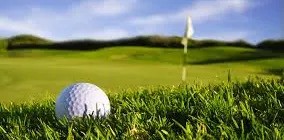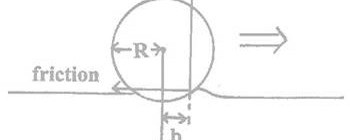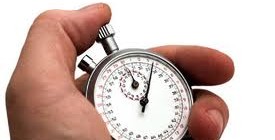“Putting is an Art, Not a Science.” “Confidence is the Key to Putting.” “You have to see the ball go in the hole to be a great putter.” These statements are usually declared by someone who was a former player, the old school type, who is now coaching. The kind of coach that says “This is what worked for me…” or “Here’s what I did…”. In other words, someone who can’t explain why the ball does what it does on the green. Every time I hear one of these sentences I have to bite my lip. The vast majority of golfers try these techniques and continue throughout their life to be poor putters, regardless of how often they visualize the ball going in the hole or how long they look at the putt. I know, I was one of them.
I’ve asked some of golf’s greatest putters if they could teach someone else to do and see what they do on the greens, and the answer is a unanimous “No”. Some people have a natural gift for seeing line, controlling speed, and rolling beautiful putts. Most people, however, do not. These are the people we teach. Of the 50 million golfers worldwide, how many are great natural green readers, much less great putters? Just because some former pro spent a mediocre career walking around and looking at the putt from all sides and imagining it go it does not mean that is the best way to read greens.
So is putting an art or a science? Imagine you walked into a physics classroom and confidently informed the professor that, according to your golf coach, a ball rolling on a surface wasn’t obedient to the laws of physics but was a matter of art and visualization. His utterly blank stare would only give way to roaring laughter. So why do people say that?
A putt’s break and speed are controlled by physical factors: gravity, friction, tilt, grain, and wind. Predicting line and speed, i.e. green reading, is a matter of understanding the relationships and perceiving the variables. But executing the putt is an athletic move. Let’s compare it to a full swing shot. Reading the shot means getting the distance and factoring in elevation, wind, and lie. But then hitting the shot is an athletic motion. So is full swing art or science? First let’s substitute the word “Art” with “Athletic”. Art means a creative expression of beauty or ideas and really doesn’t apply to golf. It’s used in an attempt to get players to stop thinking mechanically and to allow flow (which has a lot of value), but is not an accurate word. “Athletic” is much better. Is golf Athletic? Absolutely. Are the ball flight laws scientific? Absolutely. They’re not mutually exclusive but rather need to balance each other.
Back to putting. If you understand how much a ball must break based on the factors, then you will read greens better. AimPoint tells you with 95% certainty how much the ball must break. The last 5% is random variation–bumps, wind gusts, etc–which are beyond your control anyway. If you know the correct break, then you can systematically address line and stroke errors and start understanding speed better. And if anything represents art or athletic ability in putting it’s speed control. Not because it’s not affected by the laws of physics, but because the human brain’s perception of speed and force control is a very right-brained, subconscious activity and can be very individualized, unlike predicting break where a+b=c. In fact, I spend the majority of my teaching time working on speed once a player has learned to read putts well.
The true art is in coaching. How do you effect a change in someone who has different experience, different anatomy, different hopes and fears, and different beliefs than you do? This is why I cringe at the “this is what I do” coaching method. What your coach did as a player is largely irrelevant and probably won’t work for you. The best coach I ever had told me on Day One, “Don’t try to copy me, what works for me won’t work for you. We have to find what works for you.” As golf students we would be wise to understand the fundamental concepts but be athletic enough to let ourselves perform in whatever way works best for us.


























